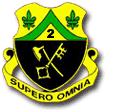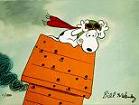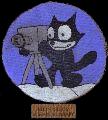mind_messing
Posts: 3393
Joined: 10/28/2013
Status: offline

|
quote:
ORIGINAL: byron13
Playing the Allies against AI. January '43 I run the South Dakota, Maryland, West Virginia, 2 CAs, 1 CL and 3DDs into Timor. All fully updated with radar, but pretty low night experience in the 40s.
Ching is in command. Along comes the Kirishima, a CL, and 4 DDs. They are picked up at long range by the Allies but, due to rain, engagements being at 2000 yards.
Allies are cut up. South Dakota sinks and, as best I can tell never fired a shot, Maryland heavily damaged, and a CA sunk. Long lances did some damage, but the naval gunnery what decidedly in favor of Japanese.
Next night, the Japanese show up again. Spotted on radar and Allies cross the T. Two Japanese battleships not hit at all. West Virginia sunk. Only Japanese loss was the CL, which had a magazine explosion from hit by CA.
Why such bad results at night with radar. The Allied battleships basically did nothing though led well, with radar, and excellent leadership. Luck of the draw? Or was it primarily poor night experience?
I'm, uh, disappointed and am now leery about putting the BBs in any kind of surface engagement. thoughts?
- Your task force was hampered by the slower Allied BB's. The Kirishima is a fast BB. That speed advantage probably led to your T being crossed.
- Night experiance. Big difference between IJN and USN in this respect.
- Ship and task force commanders? IJN commanders are generally decent across the board, but the occasional idiot can end up in command of a USN ship.
- TF composition. The CA's and CL were tied to the slow battleship line. Seperate them in to task forces of their own and they'll perform much better.
|
 Printable Version
Printable Version



















 New Messages
New Messages No New Messages
No New Messages Hot Topic w/ New Messages
Hot Topic w/ New Messages Hot Topic w/o New Messages
Hot Topic w/o New Messages Locked w/ New Messages
Locked w/ New Messages Locked w/o New Messages
Locked w/o New Messages Post New Thread
Post New Thread